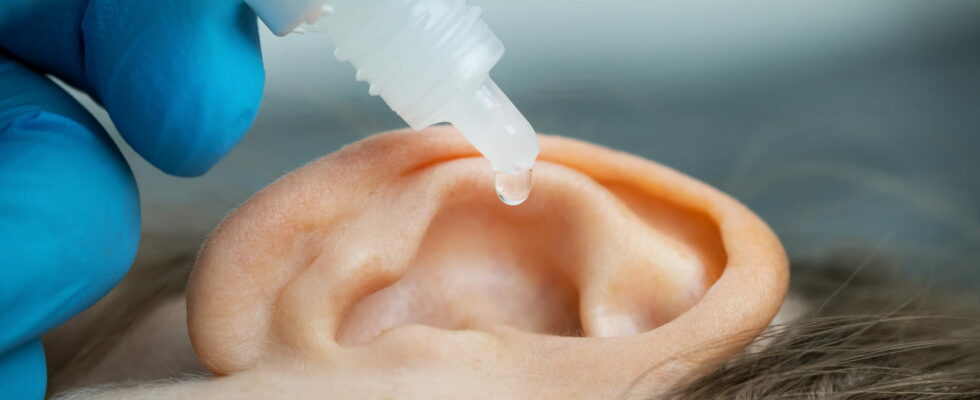A serous or seromucous otitis is an inflammation of the middle ear, with yellow serous fluid behind the eardrum. It is more common in babies, but possible in adults.
An otitis is said to be serous when it is caused by the presence of yellow serous fluid in the eardrum (behind the eardrum). It is also called seromucous otitis. What are the symptoms of serous otitis? Is it painful? How to treat serous otitis? What are the natural treatments?
Definition: what is serous otitis?
“Serous otitis is a inflammation of the middle ear (behind the eardrum) with accumulation of sticky fluid, more or less thick in this part called “eardrum”, explains Dr. Monique Quillard, general practitioner. The middle ear is the part that contains part of the auditory system: the ossicles.” There is no perforation of the eardrum.
What are the symptoms of serous otitis?
Serous otitis is not painful but manifests itself in adults by:
- a clogged ear sensation,
- partial deafness,
- buzzing,
- balance disorders.
What is the cause of serous otitis?
Serous otitis is a chronic disease occurring in both adults and children, followinga respiratory infection, most often viral:
► In adults:
► In the baby, the child:
- Eustachian tube dysfunction
- Adenoid hypertrophy
- Allergy
Is it contagious ?
No, serous otitis is not contagious.
Can you fly when you have serous otitis?
No, it is not recommended for you : your ears being clogged, the pressure in the device may cause you terrible pain. Likewise, scuba diving is contraindicated.
What is the prevalence in adults?
“It concerns less than 10% of adults”, says our expert.
How long does serous otitis last?
It lasts quite a long time, at least 3 months.
When to consult in case of serous otitis?
As of the first symptoms which are the feeling of obstructed ear and the loss of hearing, even tinnitus.
What tests to diagnose serous otitis?
To make the diagnosis of serous otitis, the practitioner performs the following examinations:
- I’eardrum examination using an otoscope (small magnifying glass equipped with lighting) which shows a particular aspect of the eardrum: dull and frosted
- There tympanometry allows to measure the elasticity of the eardrum, which is reduced by the presence of the liquid, is the examination of choice, practiced by the ENT
- I’audiometry (hearing measurement) measures the impact of serous otitis.
The treatment is different according to age and the impact on hearing. “A treatment based on washing the nasal cavities, ofanti-inflammatories and of mucolytics to unclog the Eustachian tubes is put in place over a period ofat least one month, explains Dr. Quillard. Most of the time everything is fine. But sometimes, she can have complications such as partial deafness or recurrent acute ear infections. Therefore, the doctor may be required to suggest the yo-yo pose, A drain which eliminates outwards the secretions located in the eardrum. They are inserted, under general anesthesia, through the eardrum. They ensure good drainage of the middle ear to avoid any complications or relapses. They will fall off on their own, three to five months after they have been laid. Removal of adenoids is often necessary in children.
What are the best essential oils?
Ieucalyptus essential oil for its fluidifying properties. Diluted 1 to 10 drops in 1 to 2 vegetable oil pressures per drop of HE. To be applied around the ear, 3 to 4 times a day.
What are the best plants?
Suck 1 propolis gum per day, optionally reinforced with grapefruit seed extract.
Thanks to Dr Monique Quillard, general practitioner.
